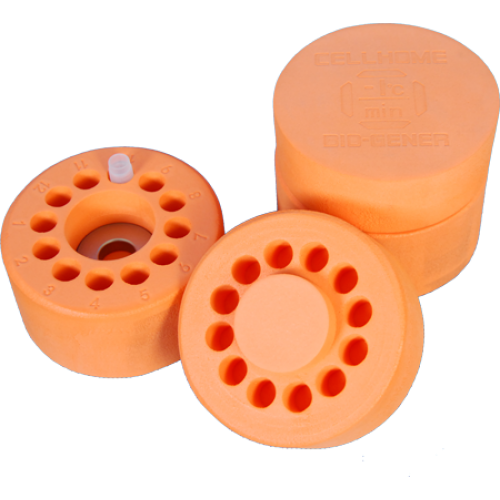What is Cell Freezing?
Cryopreservation, or cell freezing, is a crucial step of animal cell culture and long-term maintenance, which is different from the process of preserving bacteria and fungi. It is the most effective method of animal cell culture preservation and is accomplished by either a suitable cryogenic agent or liquid nitrogen. It can oftentimes be difficult to maintain cell lines, due to the viability of preserved cell lines, slow growth rates, physiological conditions, cell density and the type of cryoprotectant and freezing technique.
It is important to utilize an appropriate cell freezing method – preferably one that establishes the high viability of the cells (approximately more than 90%). Cryopreservation slowly reduces the temperature of cells from -30 degree Celsius to -60 degree Celsius, which is followed by flash freezing to less than -130 degree Celsius. As the cells reach low temperatures, the degrading enzymes (proteases and phosphatases) become ineffective, leading to a state of biological inertness.
The BT Lab Systems Cell Freezing System, in combination with a -80-degree Celsius freezer or dry ice locker, provides a freezing rate of -1 degree Celsius per minute, which is ideal for cryo-preservation of most cultured cell lines. The instrument has is user-friendly and has multiple features, including a combination of insulation foam, radial symmetry and a heat transfer core to regulate heat loss.
Due to the low thermal mass, the system will not increase in local freezer temperature. Instead, it will rapidly return commercially available cryogenic storage vials to room temperature, and protect nearby samples already stored in the freezer, resulting in extremely consistent cell profiles.
Tips & Tricks for Using a Cell Freezing System
- To ensure the highest number of viable cells, use actively growing cells harvested from late logarithmic to early stationary phase cells.
- Handle all harvested cells with gentle handling techniques – vigorous pipetting, longer trypsinization and high-speed centrifugation will affect cell viability and should always be avoided.
- To avoid contamination, use a high-quality, sterilized cryoprotectant.
- Use extreme care and avoid contact with skin while using DMSO, which is corrosive and neurotoxic.
- When freezing cells, place glass vials in a slanted position so the liquid can expand without cracking the glass (consider placing the vials in a Styrofoam box and placing in a -80°C freezer overnight).
- Always wear personal protective equipment.
Cell Freezing system brought to you by our friends at BT Lab Systems
To learn more about the BT1401 Cell Freezing System, visit the BT Lab Systems website today







